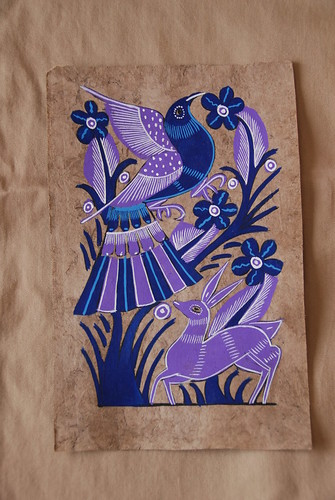Bark painting is an Australian Aboriginal art-form, involving painting on the interior of a strip of tree bark. This is a continuing form of artistic expression in Arnhem Land and other regions in the Top End of Australia including parts of the Kimberley region of Western Australia. Traditionally, bark paintings were produced for instructional and ceremonial purposes and were transient objects. Today, they are keenly sought after by collectors and public arts institutions.
The barest necessities for bark artwork are paint, brushes, bark, fixative and a fire.
The material of choice is the bark from Stringybark (Eucalyptus tetradonta). The bark must be free of knots and other blemishes. It is best cut from the tree in the wet season when the sap is rising. Two horizontal slices and a single vertical slice are made into the tree, and the bark is carefully peeled off with the aid of a sharpened tool. Only the inner smooth bark is kept and placed in a fire. After heating in the fire, the bark is flattened under foot and weighted with stones or logs to dry flat. Once dry, it is ready to paint upon.
Earth pigments—or ochres—in red, yellow and black are used, also mineral oxides of iron and manganese and white pipeclay, or calcium carbonate. Ochres may be fixed with a binder such as PVA glue, or previously, with the sap or juice of plants such as orchid bulbs.
After the painting is completed, the bark is splinted at either end to keep the painting flat. A fixative, traditionally orchid juice, is added over the top.



No comments:
Post a Comment
Reply to message